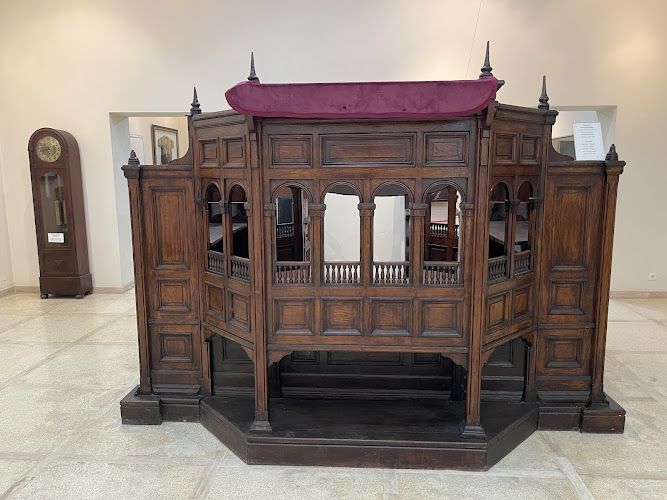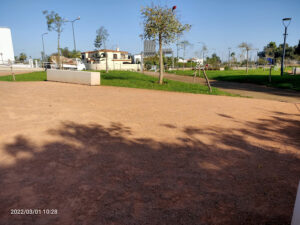
About Museum of Moroccan Judaism
Description
Located in the heart of Casablanca, the Museum of Moroccan Judaism stands as a testament to the rich Jewish heritage that has been an integral part of Morocco's cultural tapestry for centuries. As the only Jewish museum in the Arab world, this intimate space tells a compelling story of [a once-thriving Jewish population that numbered in the hundreds of thousands, though today only about 2,000 remain, mostly in Casablanca](https://www.tripadvisor.com/Attraction_Review-g293732-d538215-Reviews-Museum_of_Moroccan_Judaism-Casablanca_Casablanca_Settat.html). While modest in size, every inch of this museum packs a powerful historical punch. The carefully curated exhibits showcase an impressive collection of religious artifacts, traditional clothing, ceremonial objects, and old photographs that paint a vivid picture of Jewish life in Morocco. You'll find everything from ornate Torah scrolls to traditional wedding dresses, each item telling its own story of cultural preservation and interfaith harmony.Key Features
• Extensive collection of Judaica including religious texts, ceremonial objects, and traditional clothing • Historical photographs documenting Jewish life across different Moroccan cities • Traditional Moroccan-Jewish household items and furniture • Reconstructed jewelry-making workshop highlighting Jewish craftmanship • Archive of documents and manuscripts dating back several centuries • Memorial wall honoring Moroccan Jews who fought in World War II • Exhibition space featuring rotating displays of contemporary Jewish-Moroccan art • Educational area with multimedia presentations on Jewish traditions • Collection of ancient Hebrew books and religious manuscripts • Traditional synagogue artifacts and ceremonial objectsBest Time to Visit
The museum offers a comfortable indoor experience year-round, making it an excellent escape from Casablanca's summer heat or winter rains. Morning visits tend to be quieter, offering more opportunity to engage with the exhibits in depth. The museum is closed on Saturdays for Shabbat, so plan accordingly. Mid-week mornings, especially Tuesday through Thursday, typically see fewer visitors and provide the most relaxed atmosphere for exploring the collections.How to Get There
The museum sits in Casablanca's Oasis neighborhood, a relatively modern district that's easy to reach. Most visitors take a taxi, which is both convenient and affordable. If you're using public transportation, several bus lines stop nearby. For those driving, there's usually street parking available in the area. Just remember that Moroccan street signs can be a bit tricky to navigate, so having your smartphone's GPS handy isn't a bad idea.Tips for Visiting
Remember to dress respectfully - while not strictly enforced, modest clothing is appreciated. Photography is allowed in most areas, but always ask for permission before taking pictures of specific artifacts. The museum staff, though small in number, are incredibly knowledgeable and often happy to share additional insights about the exhibits. Plan to spend about 1-2 hours exploring the collections. Consider hiring a guide for a more in-depth understanding of the exhibits - they often share fascinating stories that aren't included in the written descriptions. Keep in mind that some signs are in French and Arabic, so having a guide can be particularly helpful if you don't speak either language. The museum doesn't have a café, so grab a bite before or after your visit. You might want to bring a bottle of water, especially during warmer months. And don't rush through - take time to read the descriptions and absorb the historical significance of what you're seeing. This isn't just a museum; it's a unique window into a fascinating aspect of Morocco's diverse cultural heritage that many visitors overlook. The gift shop, though small, offers some interesting books and locally-made Judaica that make for meaningful souvenirs. Keep some cash handy, as credit card facilities can be unreliable. Lastly, if you're interested in Jewish history, consider combining your visit with a trip to some of Casablanca's historic synagogues - the museum staff can point you in the right direction.Description
Located in the heart of Casablanca, the Museum of Moroccan Judaism stands as a testament to the rich Jewish heritage that has been an integral part of Morocco’s cultural tapestry for centuries. As the only Jewish museum in the Arab world, this intimate space tells a compelling story of [a once-thriving Jewish population that numbered in the hundreds of thousands, though today only about 2,000 remain, mostly in Casablanca](https://www.tripadvisor.com/Attraction_Review-g293732-d538215-Reviews-Museum_of_Moroccan_Judaism-Casablanca_Casablanca_Settat.html).
While modest in size, every inch of this museum packs a powerful historical punch. The carefully curated exhibits showcase an impressive collection of religious artifacts, traditional clothing, ceremonial objects, and old photographs that paint a vivid picture of Jewish life in Morocco. You’ll find everything from ornate Torah scrolls to traditional wedding dresses, each item telling its own story of cultural preservation and interfaith harmony.
Key Features
• Extensive collection of Judaica including religious texts, ceremonial objects, and traditional clothing
• Historical photographs documenting Jewish life across different Moroccan cities
• Traditional Moroccan-Jewish household items and furniture
• Reconstructed jewelry-making workshop highlighting Jewish craftmanship
• Archive of documents and manuscripts dating back several centuries
• Memorial wall honoring Moroccan Jews who fought in World War II
• Exhibition space featuring rotating displays of contemporary Jewish-Moroccan art
• Educational area with multimedia presentations on Jewish traditions
• Collection of ancient Hebrew books and religious manuscripts
• Traditional synagogue artifacts and ceremonial objects
Best Time to Visit
The museum offers a comfortable indoor experience year-round, making it an excellent escape from Casablanca’s summer heat or winter rains. Morning visits tend to be quieter, offering more opportunity to engage with the exhibits in depth. The museum is closed on Saturdays for Shabbat, so plan accordingly. Mid-week mornings, especially Tuesday through Thursday, typically see fewer visitors and provide the most relaxed atmosphere for exploring the collections.
How to Get There
The museum sits in Casablanca’s Oasis neighborhood, a relatively modern district that’s easy to reach. Most visitors take a taxi, which is both convenient and affordable. If you’re using public transportation, several bus lines stop nearby. For those driving, there’s usually street parking available in the area. Just remember that Moroccan street signs can be a bit tricky to navigate, so having your smartphone’s GPS handy isn’t a bad idea.
Tips for Visiting
Remember to dress respectfully – while not strictly enforced, modest clothing is appreciated. Photography is allowed in most areas, but always ask for permission before taking pictures of specific artifacts. The museum staff, though small in number, are incredibly knowledgeable and often happy to share additional insights about the exhibits.
Plan to spend about 1-2 hours exploring the collections. Consider hiring a guide for a more in-depth understanding of the exhibits – they often share fascinating stories that aren’t included in the written descriptions. Keep in mind that some signs are in French and Arabic, so having a guide can be particularly helpful if you don’t speak either language.
The museum doesn’t have a café, so grab a bite before or after your visit. You might want to bring a bottle of water, especially during warmer months. And don’t rush through – take time to read the descriptions and absorb the historical significance of what you’re seeing. This isn’t just a museum; it’s a unique window into a fascinating aspect of Morocco’s diverse cultural heritage that many visitors overlook.
The gift shop, though small, offers some interesting books and locally-made Judaica that make for meaningful souvenirs. Keep some cash handy, as credit card facilities can be unreliable. Lastly, if you’re interested in Jewish history, consider combining your visit with a trip to some of Casablanca’s historic synagogues – the museum staff can point you in the right direction.
Location
Places to Stay Near Museum of Moroccan Judaism
Find Tours in Casablanca
Explore More Travel Guides
No reviews found! Be the first to review!


